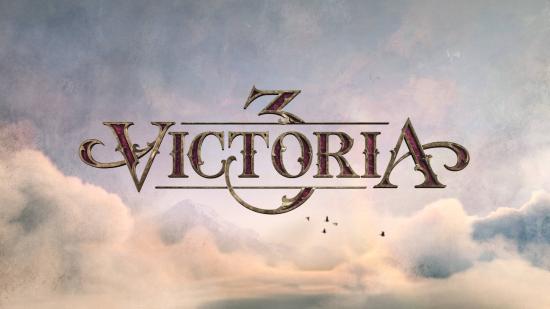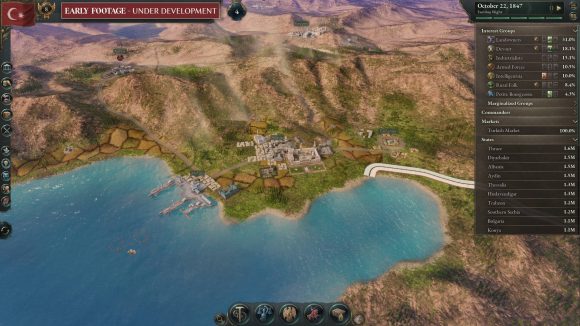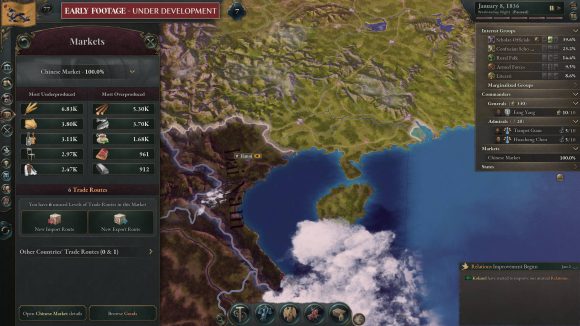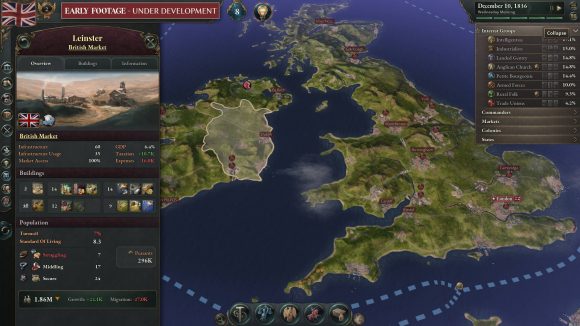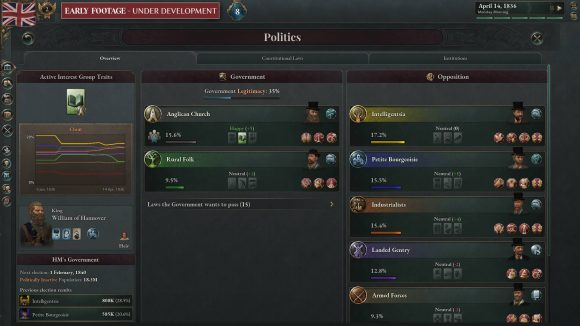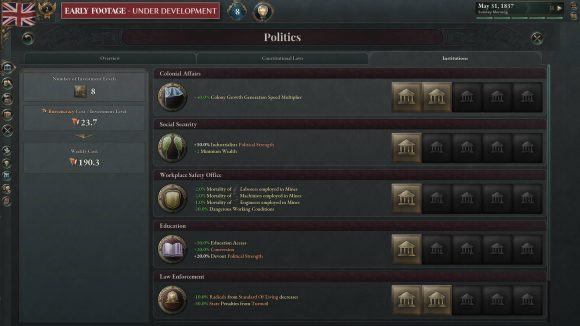To the amazement of many, and the joy of others, industrial-era grand-strategy game Victoria 3 has today been revealed by Paradox Interactive. Announced during the publisher’s PDXCON Remixed livestream, Victoria 3 is partway through development, and will feature the same economic and political focus as its predecessors, while bringing new diplomacy mechanics, design focuses, and gameplay features to the historical simulator. No release date has been announced.
Revealed to be the ‘secret game’ teased by Paradox over the last couple of months, Victoria 3 will play much like the developer’s other grand-strategy titles. Players direct a country’s economic, political, and military pursuits in a historical sandbox-simulation of the Victorian era. This will involve grappling with tumultuous political revolution, technological development, and international stand-offs, amid domestic and global power struggles.
The game will include over 100 playable countries at launch, and span the years 1836 to 1936. But its focus lies heavily on political and economic management, rather than military conquest. Revealed in a pre-announcement press showcase, a significant portion of Victoria 3’s gameplay centres on mediating political interest groups within your state (such as Industrialists, Intelligentsia, Devout, Rural folk, Junkers, and more), who will support or oppose your decisions.
You’ll need to track their competing preferences, while navigating and manipulating interest groups to achieve your goals. Paradox gives the example of weakening the power of Industrialists, who favour private funding over public expenditure, and may resist efforts to bolster state production policies.

Similarly, introducing education reforms may alter the political awareness of workers, encouraging the growth of trade unions. You’ll need to keep the interest groups happy to enact laws, and make decisions, while balancing their competing demands.
As with its 2010 predecessor, Paradox intends for Victoria 3 to intricately simulate the changing demographics of each nation, which will, in turn, determine the power of a country’s interest groups.
According to the developer, the entire global population in 1836 (roughly one billion people) has been simulated in-game, to accurately recreate class, cultural, religious, and status disparities.
Also revealed in the pre-announcement showcase, Victoria 3 will heavily emphasise diplomatic resolutions over warfare. Before any war is declared, countries can use ‘diplomatic plays’ to avoid fighting.
These function similarly to negotiations. One party demands something from the other (such as a colony, province, or tribute), before both attempt to convince other states to join the conflict, and leverage the power of these nations to demand more from their opponent. After one side sees the incoming force, they might back down, concede to the original demand, and avoid war altogether.
Trade looks to be essential, too, as players create new market blocs to buy and sell goods. You’ll be able to enact different forms of economic system, such as mercantilism or free trade, to generate the most prosperous economic base, and keep your population happy.
There’s also the usual grand strategy staples, including technology trees, which may be influenced by external powers and rising interest groups; several resources for managing your country; and updated graphics, including what looks to be the character model engine from Crusader Kings 3 (although presumably with more moustaches and waistcoats).
Victoria 3 has been hotly anticipated by Paradox fans for several years, with claims of its release, or even existence, falling somewhere between hopeful conspiracies and silly memery. With Victoria 2 released nearly a decade ago, many fans have been optimistic that a third game would surface soon, and anticipated Paradox’s reveal of its secret project at PDXCON Remixed would do just that.
Maybe we shouldn’t be totally surprised. We spoke to Paradox veteran designer Johan Andersson last month, who confirmed Victoria 3 had been in “discussions” at the studio for some time.
Watch out for our interview with Victoria 3’s game director Martin Anward, and game designer Mikael Andersson, coming soon, in which we explore how the game will combine alt-history and historical simulation, the specifics of its new features, and how it’s making grand strategy accessible to new players.
